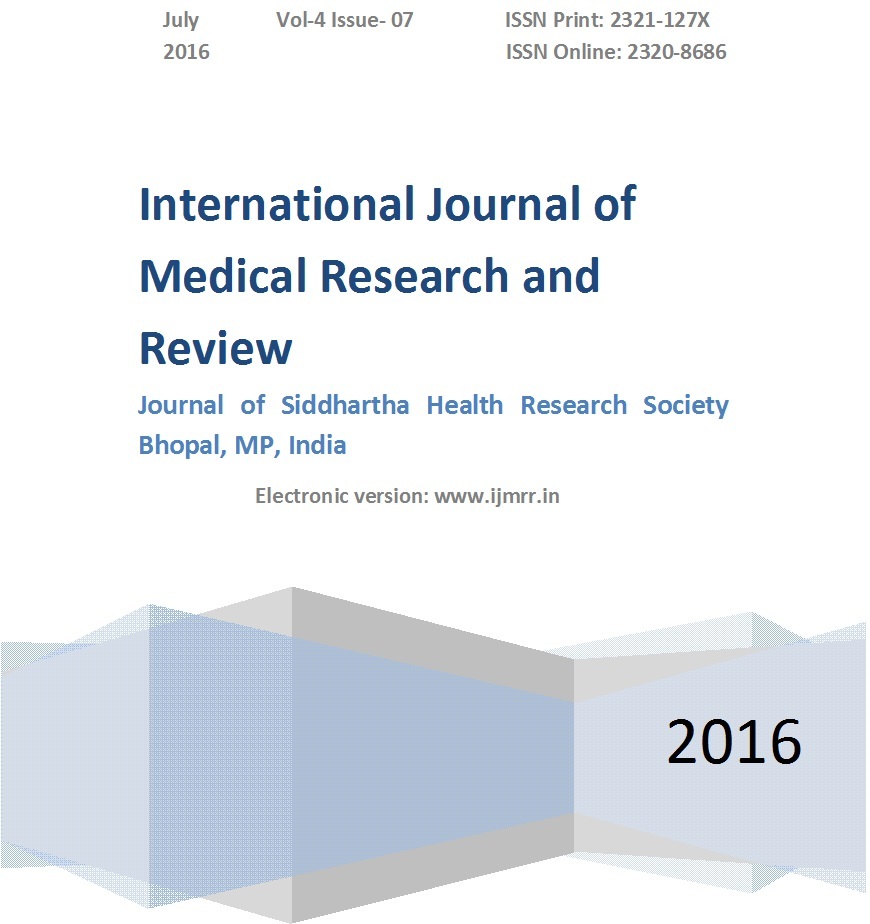Morphologic study of nutrient foramina in dried tibia and its clinical implications
Abstract
Introduction: Diaphyseal fractures of tibia cases are common in orthopaedics and traumatology department. While planning a bone graft for a patient with trauma or tumour resection, the vascularity of the left over bone in the donor site is important as it influences the choice of graft to be used.
Methodology: The study was conducted on 50 adult dried tibiae. Diaphyseal nutrient foramina were identified by their elevated margins and by the presence of a distinct groove proximal to them. Foramen index was calculated.
Results: All the foramina were present on the posterior surface. Most of the (80%) nutrient foramina were present lateral to vertical line (17 on the right and 23 on the left side). Eight nutrient foramina were present on the vertical line. Only two nutrient foramina were present medial to vertical line. The mean foramen index between right and left tibiae was 32.99 ± 1.87 and 34.36 ± 6.24 respectively. Majority (82%) of nutrient foramina were found on upper zone, 18% were observed on middle zone and none were found on the lower zone.
Conclusion: Scarcity of nutrient foramina in the middle and lower 1/3rd of the shaft indicates poor blood supply to this region of bone which may account for delayed union or non union of the fractures at the lower part of the bone.
Downloads
References
Roger W Soames, Skeletal system, in: Gray’s Anatomy 38thed. Edinburgh, Churchill livingstone. 1996; p. 469.
Ankolekar VH, Quadros LS, D’souza AS. Nutrient foramen in tibia - A study in coastal region of Karnataka. IOSR Journal of Dental and Medical Sciences. 2013; 10(3): 75-79.doi: https://doi.org/10.9790/0853-1037577.
Gopala Krishna K, Rathna BS. The study on the incidence and direction of nutrient foramina in the diaphysis of femur bone of south Indian origin and their clinical importance. International Journal of Basic and Life Sciences 2014; 2(2): 11-19. ISSN (Online): 2320-513X.
Gandhi Swati, Singla RK, Suri RK, Mehata V. Diaphyseal nutrient foramina of adult human tibia - its positional anatomy and clinical implications. Rev Arg de Anat Clin. 2013; 5(3): 222 -228.
Tejaswini HL, Shetty K, Dakshayani KR. Anatomic study of nutrient foramina in the human tibia and their clinical importance. International Journal of Recent Trends in Science and Technology. 2014; 9(3): 334- 336. https://statperson.com/Journal/ScienceAndTechnology/Article/Volume9Issue3/9_3_9.pdf.
Menck J, Döbler A, Döhler JR. [Vascularization of the humerus]. Langenbecks Arch Chir. 1997;382(3):123-7.
Dr.Shamsunder Rao V, Jyothinath Kothapalli. The diaphyseal nutrient foramina architecture – A study on the human upper and lower limb long bones. Journal of Pharmacy and Biological Sciences. 2014; 9(1): 36-41.doi: https://doi.org/10.9790/3008-09133641.
HUGHES H. The factors determining the direction of the canal for the nutrient artery in the long bones of mammals and birds. Acta Anat (Basel). 1952;15(3):261-80.doi: https://doi.org/10.1159/000140748.
Udaya K, Sarala Devi KV, Sridhar J. Analysis of nutrient foramen of tibia - South Indian population study. Int J Cur Res Rev. 2013; 5(8): 91-98. https://www.ijcrr.com/article_html.php?did=1381&issueno=0.
Longia GS, Ajmani ML, Saxena SK, Thomas RJ. Study of diaphyseal nutrient foramina in human long bones. Acta Anat (Basel). 1980;107(4):399-406.doi: https://doi.org/10.1159/000145267.



 OAI - Open Archives Initiative
OAI - Open Archives Initiative


